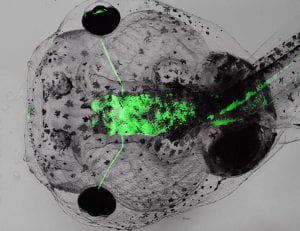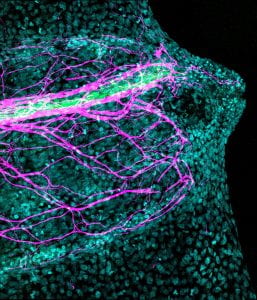 We are driven by the desire to understand the factors and processes that enable complex tissue regeneration. In humans, major injuries to structures like the spinal cord, limb, or heart result in permanent damage and loss of quality of life. However, other vertebrates are able to fully repair these injuries. By discerning the mechanisms that enable full regenerative healing in other animals, we seek to gain insight into how regenerative responses can be initiated and extended in human patients.
We are driven by the desire to understand the factors and processes that enable complex tissue regeneration. In humans, major injuries to structures like the spinal cord, limb, or heart result in permanent damage and loss of quality of life. However, other vertebrates are able to fully repair these injuries. By discerning the mechanisms that enable full regenerative healing in other animals, we seek to gain insight into how regenerative responses can be initiated and extended in human patients.
Our lab uses Xenopus tropicalis tadpoles for our research. These frogs have a unique advantage as a regenerative model organism, in that tadpoles are highly regenerative while adult frogs are not. This means that we can directly compare a regenerative to a non-regenerative structure within the context of the same genome and same cell biology. Xenopus tadpoles are abundant (up to several thousand in one clutch!), reach regenerative stages in 3 days, and fully regrow lost structures such as the tail within days.
While we are interested in all aspects of regeneration, several of the main questions in the lab include:
 How do neural progenitor cells of the spinal cord guide regeneration? In tadpoles, neural progenitor cells of the spinal cord contribute both to the proliferation and growth of new tissue, and to differentiation, making new functional neurons. What regulates these decisions?
How do neural progenitor cells of the spinal cord guide regeneration? In tadpoles, neural progenitor cells of the spinal cord contribute both to the proliferation and growth of new tissue, and to differentiation, making new functional neurons. What regulates these decisions?- How does the chromatin environment inform regenerative healing? The ability of a cell to express genes associated with regenerative healing depends on whether the chromatin environment is permissive for those genes’ expression. We use next-gen sequencing approaches to profile the accessibility and transcription factor occupancy of the genome as regeneration proceeds.
- How are cellular stress responses coupled to regeneration? All animals, including humans, respond to an injury with a similar set of immediate molecular and cellular signals. But only some animals follow these responses with regeneration. What connects these events?
- How does the innate immune system promote regeneration? Cells of the innate immune system, including macrophages, are critical to regeneration in many vertebrates. How do signals produced by these cells promote tissue repair?

